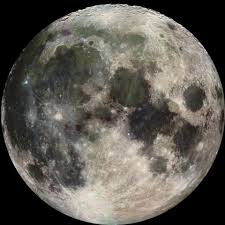
This text explores the Solar System’s Moons and will tell you all about them. It is important to know the planet’s moons, not just the planets themselves, and to see if their moons are habitable.
The Earth’s moon
Earth had another planet in its orbit around the size of Mars that had collided with Earth, and that planet’s name was Theia and that was how the moon was formed.The moon is the fifth biggest moon in the Solar System.
Mars’ moons
Mars also has moons named Phobos and Deimos, but they are not round like our moon. They have a rock-shaped look but in about 70 million years Deimos will get pulled into Mars and will become rings.
4 moons of Jupiter out of 95 moons
Next is Ganymede Jupiter and the Solar System’s largest moon. Ganymede has more salt water than the Earth’s surface. It has its magnetic field and is the only one to have it. Callisto is the second biggest moon of Jupiter and the third in the Solar System, and 99% as big as Mercury. Callisto is on the list of having a life like Earth. Callisto has a diameter of about 4,800 km (3,000 miles) and is less than 100 km. IO is the third largest moon of Jupiter and the fourth largest in the Solar System, due to IOS being the most volcanically active world in the solar system. Last but not least is Europa the smallest Galilean moon of Jupiter and is the 4th smallest moon and the seventh-largest moon in the solar system. Europa’s surface is made of water ice so it reflects 5.5 times the sunlight than our Moon does.
4 moons of Saturn out of 146 moons.
The biggest moon of Saturn is Titan and the second biggest in the Solar System. Titan is the only moon to have a decent atmosphere but no oxygen. A day on Titan is 15.9 Earth days. Enceladus has a hidden ocean of liquid salty water beneath its crust. It is 25 times smaller than Earth and is the sixth biggest moon in the Solar System. A day is 1.37 Earth days. Mimas is the smallest astronomical body known to be in hydrostatic equilibrium. Mimas may have life under their crust where the ocean is. Mimas measures about 397 km (247 miles) in diameter. A day is 22.5 hours Earth days. Last on this list is Dione, the fifteenth-largest moon in the Solar System. It is 349 miles (562 km) in mean radius and orbits Saturn every 2.7 Earth days. Dione might sustain life like Earth.
4 moons of Uranus out of 28 moons.
Titania is the largest moon of Uranus and the eighth-largest moon in the Solar System. Its diameter is 1,578 kilometres, and it may have ice under its surface. A day on Titania is 8.706 Earth days. Miranda is the smallest of Uranus’s rounded satellites. At about 500 km in diameter, it’s only one-seventh as large as Earth’s moon. Miranda is one of the innermost and smallest of Uranus’ moons. A day on Miranda is 1.41 Earth days. Ariel has the brightest surface of the five largest Uranian moons. A day on Ariel is 2.52 Earth days, which is 578.9 km long. Ariel’s surface appears to be the youngest of all the moons of Uranus. Last on this list is Umbriel, the darkest of Uranus’ largest moons and the third largest satellite of Uranus with a diameter of approximately 730 miles and is 4.144 Earth days long. It is the second-largest moon of Uranus.
1 moon of Neptune out of 16 moons
A mystery has been discovered in the orbit of Neptune, the only large moon named Triton. The seventh-largest moon in the Solar System. Triton was discovered on Oct. 10, 1846, just 17 days after Neptune was discovered.

